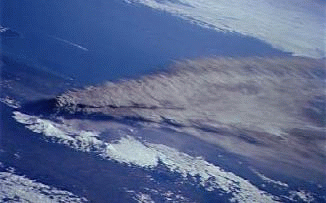Study Motivation


Large explosive volcanic eruptions are known to produce significant global climate perturbations and complicate observations of other climate forcing mechanisms. In order to accurately model global climate change, volcanic effects must be better understood
This study is focused on one important component of volcanism-climate interactions: the fate of silicate particles in the atmosphere. The eruptions of El Chichsn and Pinatubo demonstrated that eruptions which release large amounts of sulfur-rich volatiles can affectglobal climate. However, the fate of the silicate particles produced by eruptions such as these are not well known. In addition, large caldera forming eruptions, like Krakatau, which inject enormous amounts of very fine-grained silicates into the stratosphere, are capable of affecting global climate.